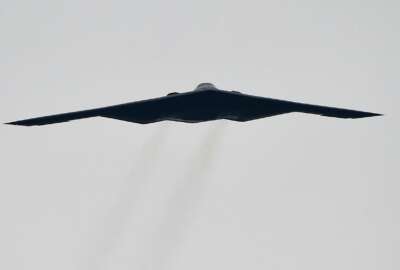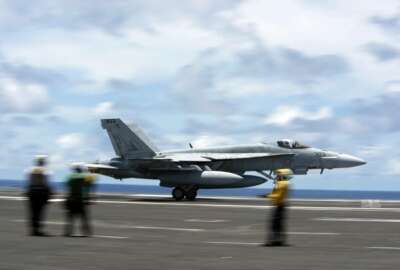
Armed services taking deep dive into training accidents, mitigation strategies
The armed services are focusing on training, tempo and maintenance to reduce the number of mishaps that lead to injuries and fatalities.
Between 2006 and 2018, twice as many U.S. soldiers died in accidents than they did in active combat, according to House Armed Services Subcommittee on Readiness Chairman John Garamendi (D-Calif.). These accidents started getting lots of attention after two high-profile Navy ship collisions in 2017. Since then, the steady rate of accidents has elicited a number of investigations, both internal and external, that have revealed a number of trends in why these incidents happen.
“These mishaps reveal that the basic elements of manning, training, and equipping are challenged across the force,” Garamendi said during a March 23 hearing. “In addition to causing loss of life, this neglect is diminishing the readiness and effectiveness of our military. We have seen in recent years that in order to pursue modernization initiatives, the services have shortchanged unit manning, flying and training hours, depot maintenance and spare parts. This leaves our operators insufficiently trained and equipment too often unavailable for use [due to] poor material and condition. This assumption of risk is not a foregone conclusion. The services can and should choose to shift their priorities to elevate manning, elevate training, and elevate safety and sustainment. This may mean buying fewer new ships and planes.”
The 2019 National Defense Authorization Act created the National Commission on Military Aviation Safety to look into some of these accidents, which just released a report in December that included 25 recommendations. Internal investigations conducted by the services mostly concurred with these recommendations. Meanwhile, Congress in 2019 also asked the Government Accountability Office to look into vehicle safety and training mishaps more generally. That investigation has not yet concluded.
But the services have not been idle while waiting for these investigations to conclude. They’ve been exploring ways to address training issues, vehicle maintenance, and the tempo of deployments, as well as how they gather and analyze data on mishaps and accidents. In some cases, that’s paid off.
“For fiscal year 2020, Army aviation mishaps dropped to a 10-year low. This was not at the expense of readiness or flying hours,” Gen. Joseph Martin, vice chief of staff for the Department of the Army, said during the hearing. “Over the same period, our combat aviation brigade reported the highest overall readiness levels, and our active duty operational readiness rate remained above 80%. For ground vehicle mishaps over the last five years, our average is the lowest since the Army began to keep records in 1972.”
One way the Army has addressed its tempo issues, Martin said, is by not sending an entire combat aviation brigade to the Combat Training Center for each rotation. He also said the Army released a supplement to its Flying Hour program to increase the amount of time pilots spend training in their aircraft.
The Army is also making changes in how it tracks and reports mishaps. Martin said, especially in aviation, the difference between a near-miss and a Class A mishap, which results in more than $2 million in damages or loss of life, can be a matter of fractions of a second. That’s led the Army to pay more attention to what Martin called the “mishap pyramid,” with near-misses and Class D mishaps – $20,000-50,000 in damages or minor injuries – at the bottom, and Class A at the top. The theory is that more near misses and Class D mishaps build toward a Class A, so by focusing more on the bottom of the pyramid, the Army can intervene before a Class A mishap occurs.
And the Army is making it easier to report all of these mishaps with a new reporting system.
“In October last year, we launched the Army Safety Management Information System, where we replaced a clunky Industrial Age process of accident reporting, where you had to fill out the same form, no matter if it was a cut on a finger or an aircraft hit the ground. It was the same accident form, it was very laborious, and it was somewhat daunting,” Martin said. “With this new system, we can see a lot more accidents. In fact, we have 97%, better compliance rate and timeliness rate of turning in accident reports because if it’s a Class D, or a near miss, it’s something that can be reported very quickly. And it also includes a non-attributional anonymous feature where you can report an accident, and no one will know you reported an accident. And so we think that ASMIS, the Army Safety Management Information System, is going to help us better see that data on those lower severe outcome accidents, to inform our changes to our processes and our procedures.”
Meanwhile, the Department of the Navy is adopting a streamlined reporting system for its accident reports, based on one used by the Air Force. And each of the services is focusing on standardizing data to make deep dives and information sharing between the services easier.
Martin also said he’s signed a memo directing the force to focus on proficiency for mechanics, and to keep them from being distracted by other duties. And the Army isn’t alone in this; the Air Force did the same to reduce the administrative burden on its maintainers, and allow them to focus on building expertise instead.
“Since 2017, we have added 4,000 maintainers to the fleet. So that’s a good start. But obviously, if you had 4,000 new maintainers, then the relative experience of your entire maintenance fleet drops down,” Gen. David Allvin, vice chief of staff for the Department of the Air Force, said during the hearing. “So we need to help season those maintainers. And through the things like credentialing and other things, we were looking at incentivization to keep those maintainers in their career field, but also keep them doing the maintaining.”
And attempts to improve maintenance aren’t just limited to the workforce; each of the services said they were looking at predictive maintenance to improve the readiness of their fleets. That usually involves the use of artificial intelligence and machine learning to determine the optimum time for maintenance.
The Air Force is also experimenting with additive manufacturing to make it easier to get hard-to-find parts. That makes it easier to keep planes in the air, allowing pilots to log more hours in specific platforms.
Copyright © 2024 Federal News Network. All rights reserved. This website is not intended for users located within the European Economic Area.
Daisy Thornton is Federal News Network’s digital managing editor. In addition to her editing responsibilities, she covers federal management, workforce and technology issues. She is also the commentary editor; email her your letters to the editor and pitches for contributed bylines.
Follow @dthorntonWFED






